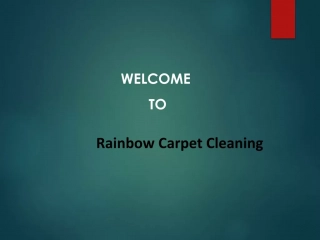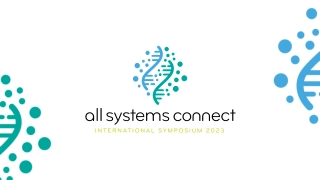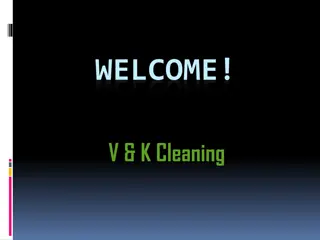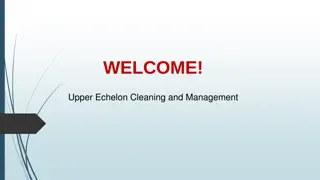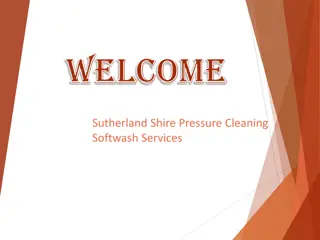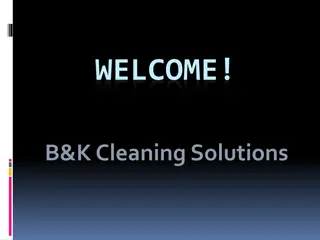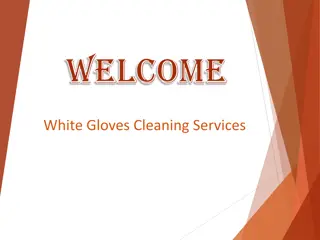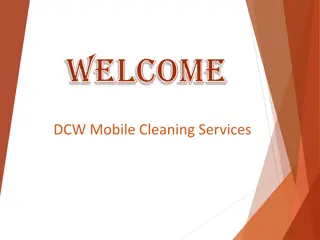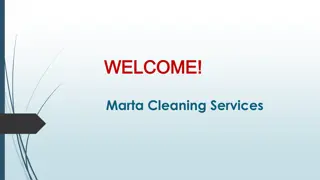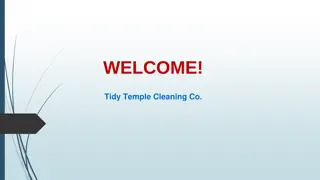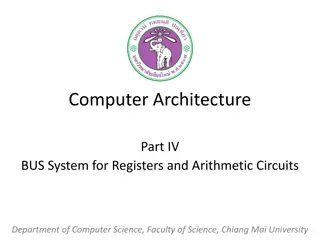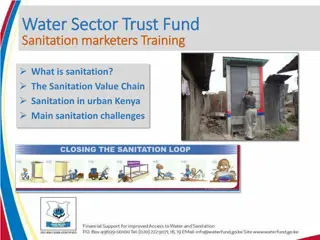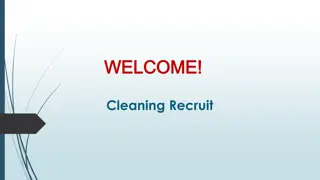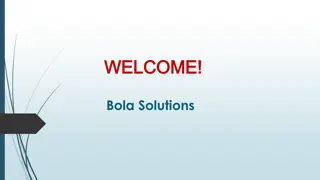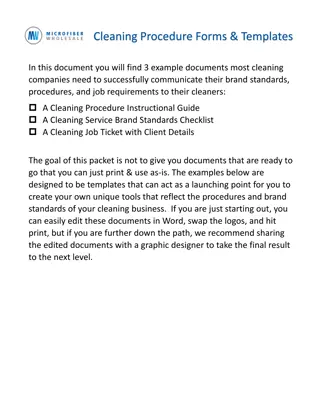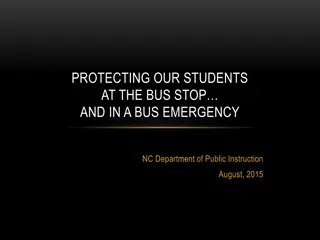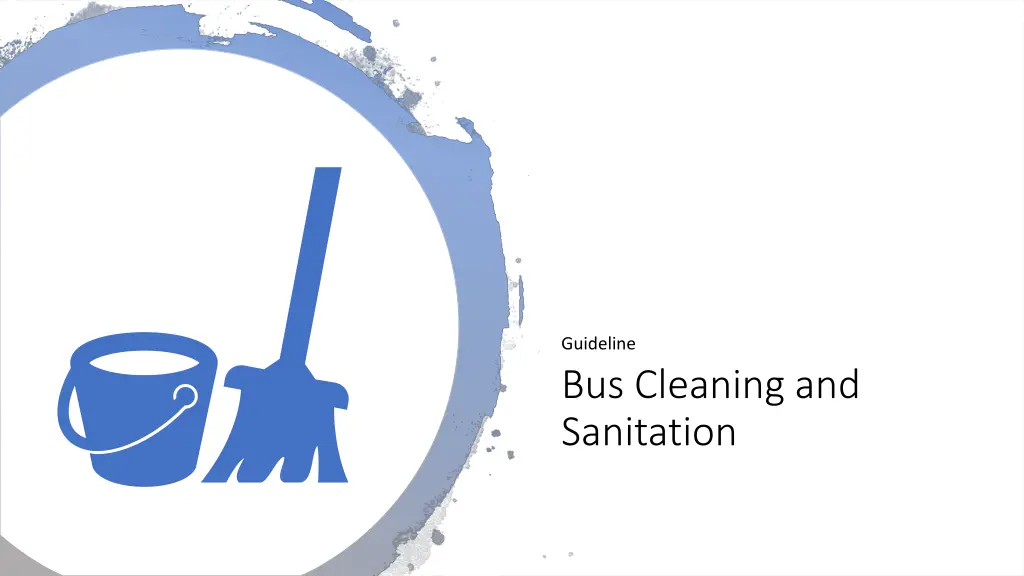
Effective Bus Cleaning and Sanitation Guidelines
Learn the CDC definitions for cleaning, sanitizing, and disinfecting bus surfaces. Follow safety measures, avoid certain products, and implement proper cleaning protocols to maintain a healthy environment. Find out the recommended cleaning frequency based on the risk level of viral infections in the community.
Uploaded on | 1 Views
Download Presentation

Please find below an Image/Link to download the presentation.
The content on the website is provided AS IS for your information and personal use only. It may not be sold, licensed, or shared on other websites without obtaining consent from the author. If you encounter any issues during the download, it is possible that the publisher has removed the file from their server.
You are allowed to download the files provided on this website for personal or commercial use, subject to the condition that they are used lawfully. All files are the property of their respective owners.
The content on the website is provided AS IS for your information and personal use only. It may not be sold, licensed, or shared on other websites without obtaining consent from the author.
E N D
Presentation Transcript
Guideline Bus Cleaning and Sanitation
CDC Definitions Cleaning removes germs, dirt and impurities from surfaces or objects. Cleaning works by using soap (or detergent) and water to physically remove germs from surfaces. This process does not necessarily kill germs, but by removing them , it lowers their numbers and the risk of spreading them. Sanitizing lowers the number of germs on the surfaces or objects to a safe level as judged by public health standards or requirements to lower risk of spreading. Disinfecting kills germs on surfaces or objects. Disinfecting works by using chemicals to kill germs on surfaces or objects. This process does not necessarily clean dirty surfaces or remove germs, but by killing germs on a surface after cleaning. It can further lower the risk of infection. Sanitizing and disinfecting require the use of EPA registered pesticides or disinfecting/sanitizing water-based devices
Safety Use appropriate personal protective equipment (PPE) as specified by manufactures safety data sheets. Provide adequate ventilation while cleaning. (open doors and windows when possible) Dispose of used products and containers properly. Do not mix different products with each other, this could cause a serious chemical reaction resulting in illness or death. Use Green products when possible to reduce any possible health risk to students.
Products not recommended for use on school bus surfaces Pure Bleach, on plastic surfaces Pure Hydrogen Peroxide, on plastic surfaces Pure or Diluted Bleach, on fabrics Ammonia based products, on plastic or vinyl
Cleaning Protocols Start from back and work your way forward Clean and remove heavy soiled and dirt Removal of all trash Use the recommended dwell time for all products Remove garbage and trash as frequently as possible Sample cleaning video link: https://www.youtube.com/watch?v=85fqXAKlYlE Sample electrostatic sprayer link: https://www.youtube.com/watch?v=2P0G9O3WZqg
Cleaning and Sanitizing Guidelines Risk Level Yellow- low virial infection in community Clean and disinfect bus weekly Clean High touch areas as often as possible Sanitize at least daily Provide hand sanitizer to students and staff Air out buses when not in use Electrostatic Sanitizing or Ultraviolet if possible / At least weekly more often if possible Risk Level Green-little or no virial infection in community Follow your school districts standard routine cleaning and disinfecting procedures. Immediately clean any areas that are visibly soiled, or any surfaces soiled with blood or bodily fluids Air out buses when not in use
Cleaning and Sanitation Guidelines Risk Level Red- viral infection rate is increasing in the community Schools are closed, buses used for meal delivery to students Reduce exposure by delivering a weeks worth of meals at a time Clean and disinfect bus after each use Risk Level Orange- viral infection rate is pronounced in the community Clean and Disinfect frequently touched surfaces after each run if possible Sanitize buses between each run Provide hand sanitizer to students and staff Provide for front to back airflow through bus Electrostatic /Ultraviolet Daily if possible
Resources CDC: www.cdc.gov EPA list N: https://www.epa.gov/pesticide-registration/list-n- disinfectants-use-against-sars-cov-2-covid-19

